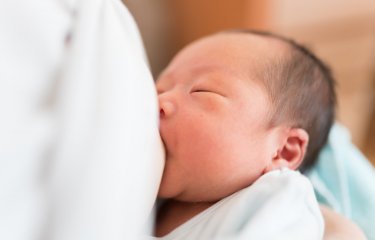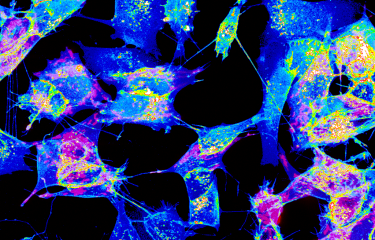Enterohemorrhagic Escherichia coli (EHEC) can be responsible for severe cases of foodborne infection. In 10% of infected individuals, the spread of Shiga toxins produced by EHEC results in hemolytic uremic syndrome (HUS), which is fatal in 3 to 5% of cases. However, patients who survive HUS often develop protective antibodies directed against fibers called type IV pili that help EHEC to adhere to host tissues. Researchers at the Institut Pasteur deciphered the structure of the EHEC type IV pili, and provided new insights into their assembly, relevant for further therapies.
Many pathogenic bacteria use dynamic surface fibers called type IV pili to adhere to host tissues and promote virulence. Escherichia coli (E. coli) is a bacterium that lives in the digestive tract of humans and warm-blooded animals. Most strains of E. coli are harmless, but a small number can lead to illness. Enterohemorrhagic Escherichia coli (see our fact sheet) causes severe diarrheal infections with a life-threatening complication called the hemolytic uremic syndrome (HUS). Antibiotic therapy for these infections is contraindicated as it can aggravate the disease, thus calling for alternative treatments.
Patients who survive HUS often develop protective antibodies directed against the major type IV pilin subunit. To decipher the structure and assembly of EHEC pili, three teams from the Institut Pasteur led by Olivera Francetic, Nadia Izadi-Pruneyre and Michael Nilges took an integrative approach and combined their complementary expertise in type IV pilus biology, nuclear magnetic resonance (NMR) spectroscopy and molecular modeling. The fiber structure was solved on a Titan Krios cryo-electron microscope in collaboration with E. Egelman, University of Virginia, USA. “The structure of these polymers reveals the molecular basis of their remarkable flexibility, essential for function” explains Olivera Francetic, head of the Macromolecular Systems group in the Biochemistry of Macromolecular Interactions Unit at the Institut Pasteur. The results shed light on critical early steps of pilus biogenesis, laying foundations for future design of modulators and inhibitors of pilus assembly and function.
Source
Structure and assembly of the Enterohemorrhagic Escherichia coli type 4 pilus, Structure, May 2nd, 2019
Benjamin Bardiaux1,4, Gisele Cardoso de Amorim2,4,7, Areli Luna Rico1,3,5, Weili Zheng6, Ingrid Guilvout3, Camille Jollivet3, Michael Nilges1, Edward H Egelman6, Nadia Izadi-Pruneyre1,2* et Olivera Francetic3*
1 Unité Bioinformatique structurale, département Biologie structurale et chimie, C3BI, Institut Pasteur ; CNRS-UMR3528, CNRS-USR3756 ; Paris, France
2 Unité RMN des biomolécules, département Biologie structurale et chimie, Institut Pasteur ; CNRS-UMR3528 ; Paris, France
3 Unité Biochimie des interactions macromoléculaires, département Biologie structurale et chimie, Institut Pasteur ; CNRS-UMR3528 ; Paris, France
5 Université Paris Diderot ; Paris, France
6 Département Biochemistry and Molecular Genetics, Université de Virginie ; Charlottesville, VA 22908, États-Unis
7 Núcleo Multidisciplinar de Pesquisa em Biologia - NUMPEX-BIO, Universidade Federal do Rio de Janeiro, Estrada de Xerém ; Rio de Janeiro, Brésil
4 Contributions égales des auteurs









